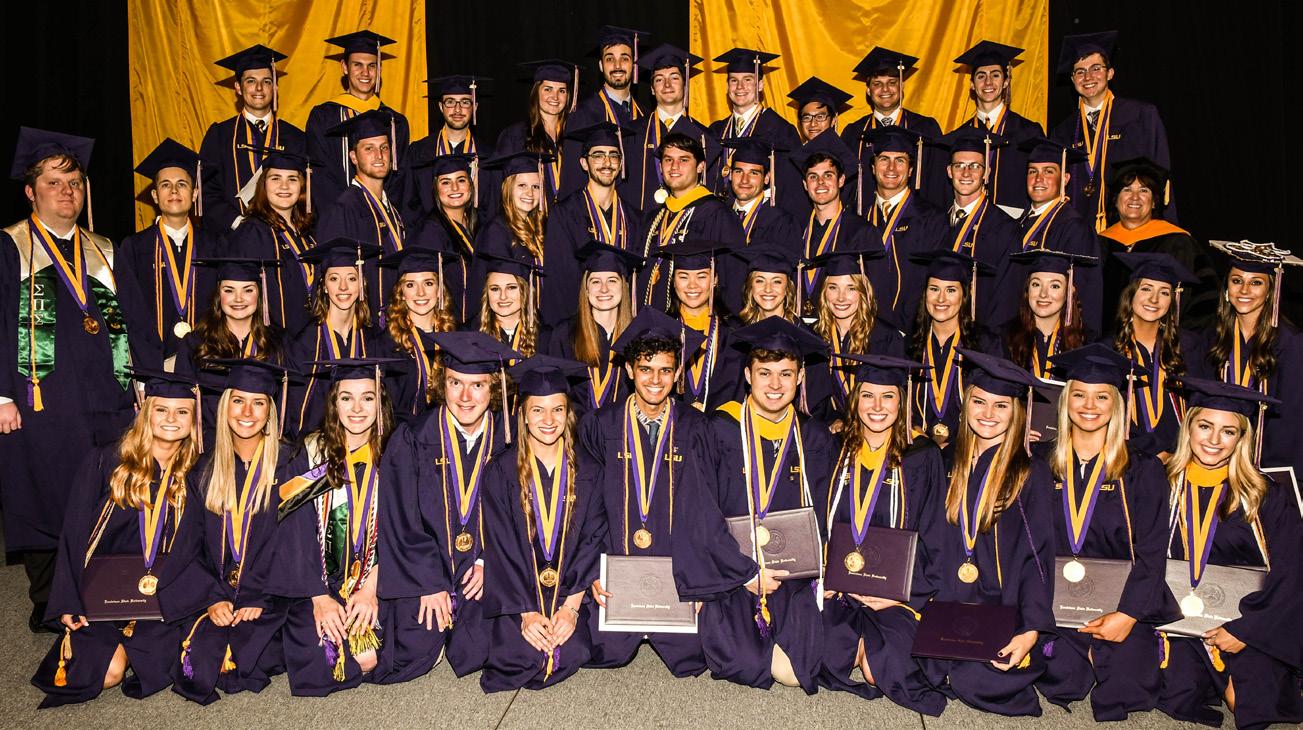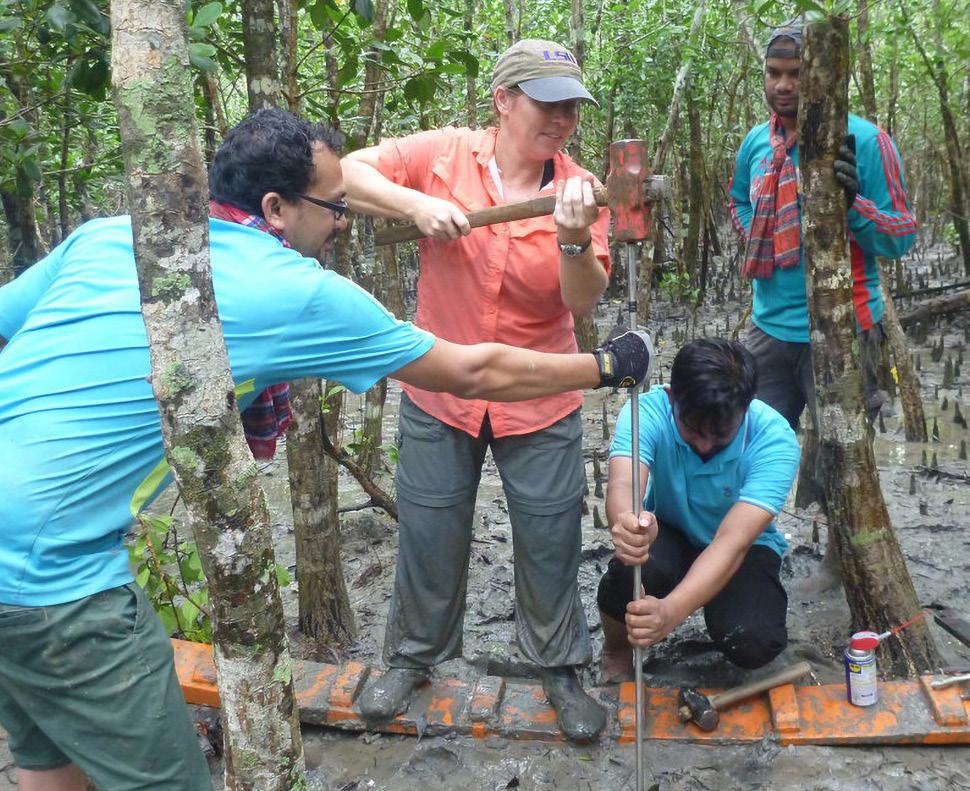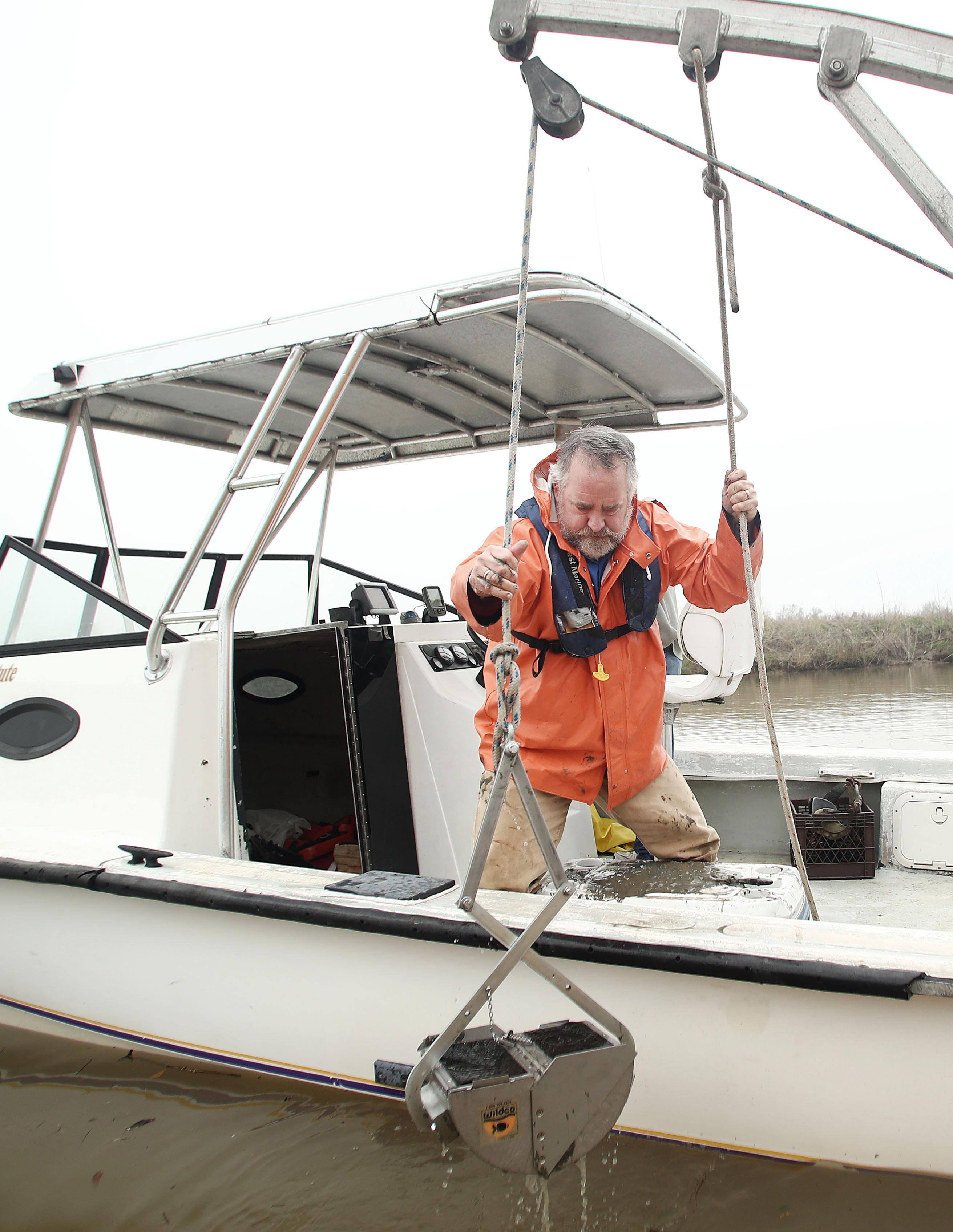
5 minute read
In-Review
More species discoveries, a newly-renovated space for science scholars, and an expedition to Bangladesh— these are some highlights from two years in the life of the LSU College of Science.

TOP STUDENTS
44 UNIVERSITY MEDALISTS (MAY 2019)
Out of the 170 graduates that received the University Medal in May, 44 were from the College of Science. The University Medal is LSU’s highest academic honor awarded to undergraduate students who earned the highest GPA.

College of Science student, Jack Green.
Credit: LSU
College of Science sophomore Jack Green was named a 2019 Goldwater Scholar, one of the most prestigious undergraduate awards given to students in STEM disciplines.
COLLEGE OF SCIENCE DEGREES AWARDED (2017-2018)
478 UNDERGRADUATE
108 GRADUATE
SCHOLARSHIPS

341 BIOS STUDENTS
Before the fall 2018 semester began, a group of 341 incoming freshman got a taste of what it would be like to be a Tiger. The Biology Intensive Orientation for Students (BIOS) and CHEMIS are one-week intensive orientation programs for incoming biological sciences and chemistry students. This past year, the College of Science Dean’s Circle (DC) contributed $16,425 in scholarships for students with financial need to participate in the programs. Since 2015, the DC has awarded more than $60,000 in scholarships to BIOS participants.
$16K+ DEAN’S CIRCLE SCHOLARSHIPS AWARDED TO STUDENTS WITH FINANCIAL NEED (2017-2018)
RENOVATION

First-year students can immerse themselves in a supportive, science focused environment by living in the newly renovated Science Residential College (SRC) in Evangeline Hall. Renovations include a tutor room, 2nd floor library, and study rooms on each floor. The basement also houses a state-of-the-art classroom with ample space for multimedia presentations and a computer lab.
The SRC has already outgrown its new home. In the 2018-2019 school year, there were 148 spots in Evangeline with overflow into West Laville Hall for female students. For the 2019-2020 school year, the SRC capacity is 186 total students with overflow into Annie Boyd Hall.
132 SRC STUDENTS (2017)
170 SRC STUDENTS (2018)
DISCOVERY
132 SPECIES DISCOVERED (2006-2019)

Cream-vented Bulbul founded by LSU Museum of Natural Sciences PhD student Subir Skakya.
The LSU Museum of Natural Science has discovered 17 new species between 2017 and 2019 contributing to the more than 130 new species of fish, reptiles and amphibians, birds, mammals, and parasites discovered by museum faculty and students since 2006. The most recent discovery was a drab brown bird called the Cream-vented Bulbul found by PhD student Subir Shakya and Museum Curator of Genetic Resources Fred Sheldon. The bird can be found from southern Thailand to Sumatra, Java and Borneo.
RESEARCH ABROAD

HOW DO WE MITIGATE THE IMPACT OF SEVERE STORMS ON THE GANGES-BRAHMAPUTRA DELTA?
As an ecogeomorphologist, Assistant Professor of Deltaic Wetland Sedimentology and Geomorphology Carol Wilson is interested in river systems, from how they move to how they build and feed wetlands and can be both life-giving and destructive forces. Wilson has taken her interests to southern Bangladesh to study the Ganges-Brahmaputra Delta and its sustainability for those living near the delta.
Being one of the most densely populated river deltas in the world, the area is at risk for sea-level rise, storms and flooding from major river events during the monsoon season. Like Louisiana, the people who live near the Ganges-Brahmaputra Delta have built levees to prevent the river from flooding their homes and land; however, there are repercussions to them. “Most of the land in the Ganges-Brahmaputra Delta is now lower in elevation due to the levees, where natural sediment is not building up those,” explained Wilson. “This potentially puts people living in this area at risk.”
“I’m trying to answer questions such as, is there enough sediment in the system to be able to build up land at a pace that is sustainable with sea-level rise and other deltaic processes,” explained Wilson. “We are also looking at elevation changes and subsidence in the area, which is the natural lowering of the land surface.”
A major part of Dr. Wilson and her team’s research is trying to understand the dynamics of the Ganges-Brahmaputra Delta, particularly where the sediment is going in the system.
Wilson, along with geologists, engineers, hydrologists and sociologists from the United States and Bangladesh, are working together to understand the dynamics of the Ganges-Brahmaputra Delta system, including how the river is migrating, how salinity is impacting where people are living and how human migration is being impacted by either salinity stress or storm surge risk. “It’s really exciting to be on the ground right now as part of this team, working to understand how sustainable the Ganges-Brahmaputra Delta is and what practices might make it more sustainable for people living in the area.”
Q: What is a delta and how is sediment involved?
Dr. Carol Wilson: A delta is the area where a river is discharging into an ocean basin. Rivers carry loads of sediment from upland areas such as mountains. Ultimately, they build new landscapes right at the ocean.
We see that almost all rivers, if there’s enough sediment load, create deltas. The problem is that humans have altered rivers’ sediment loads with the construction of dams further upstream. Dams divert or stop the natural flow of sediment down the river. We’ve also put levees up on our lower delta plains to prevent flooding. Unfortunately, this has created an imbalance. Land surfaces that are naturally lowering have no new sediment coming in to compensate for the land loss.
A river moves around over time, creating the quintessential delta shape. The movement of rivers across a landscape can also produce a cut off. A meander loop in a river can get cut off over time as the river moves. There are several places where we can see this naturally. For example, False River in Louisiana, which is a lake presently, used to be a very large meander bend in the Mississippi River that naturally got cut off a few hundred years ago.
APPROXIMATELY 2,000 LSU SCIENCE STUDENTS, FACULTY AND STAFF ARE INVOLVED IN RESEARCH EVERY DAY










